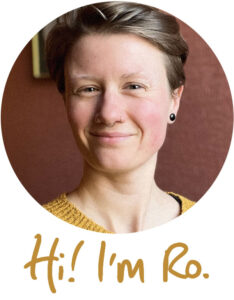How To Turn Conflict into Deeper Connection – Part 2: Committing to Connection

This is part two of a series of three posts about how we can use conflict to serve our relationships, instead of seeing it as a threat to closeness. I recommend reading part one first if you haven’t already done so. You can read part three here.
In the first post in this series, we looked at the different ways many of us avoid conflict. Whatever your particular flavour of conflict avoidance, if you want to get to a place where arguments seem like opportunities you can meet instead of threats you need to run from, then I recommend trying out a position that may feel a bit new or different. This is a position, or an attitude, where genuine connection, both with yourself and the people you love, is the thing you prioritise most.
This might sound simple or obvious, but the implications are huge. While many of us may say that we prioritise our relationships and authentic connection, our actions and attitudes often say otherwise. This often shows up when conflict arises and we prioritise wanting to be right, prove a point, hurt the other person back, or hide our true selves to avoid further argument.
To get a sense of this, let’s explore what authentic connection means.
What does authentic connection look like?
Connecting in the way I’m talking about here is an experience where…
- You are giving both yourself and the other person the gift of permission to be exactly who they are, without needing them (or you) to be any different.
- You allow the other person’s emotional state to touch you, but also pass through: you can empathise, without losing your own sense of self in the process.
- You can ask for things you want, and say the things that feel important to you, while knowing that you’ll be ok if the other person can’t meet all of your needs.
- You’re bringing curiosity to the other person’s point of view, wanting to understand where they’re coming from, instead of judging them as being difficult, inconsiderate, rude, or however else you might characterise them when you disagree.
- You’re sharing your time and energy with the other person because you feel joyful and inspired to do so – not out of obligation, guilt, or a sense of needing something from them.*
What came up for you when you read through those points? Perhaps it sounds like a big ask – an impossible place to get to. It might sound like it would take a huge amount of patience and vulnerability! And that’s true – it can. It also brings up a sense of centredness in me; I can relax into being myself, letting the other person be themself, and meeting where it feels good to meet.
My inner lone wolf finds this attitude quite alien and a little weird. But there’s another part of me that is ready to accept that this type of connecting, of relationship, is so worth the effort, because genuine, loving human connection is something I really do want.
Committing to prioritising this kind of connection is a huge first step. It means that you are recognising that the ways you’ve been approaching your relationships so far – avoiding conflict, telling yourself things would be easier if only the other person would change in some way, avoiding acknowledging and asking for the things you want – are not working for you. While your relationships may be functional and bring you lots of happiness and comfort, you likely also have a sense that there’s something stopping you from having more depth. Or perhaps there’s a pattern that keeps playing out, that you’d like to break – like my habit of running away when things feel tricky.
Antidoting your conflict tendency
I find the idea of antidoting tendencies super helpful in all sorts of areas, and we can apply it here too. Once you’re familiar with the ways you handle conflict right now, and you’ve decided you want to commit to more authentic connection, you can start to gently challenge yourself to make some changes, starting with small steps that feel doable.
This came up for me not so long ago. I was feeling some resentment and annoyance with a friend over something relatively small, and I’d noticed that a familiar story had begun playing in my mind that life would be so much easier if I just started to pull away and withdraw from them, so I wouldn’t have to handle the potential disagreement that would happen if I shared the feelings I’d been squashing down.
Antidoting my tendency here meant sticking with the relationship, finding ways of sharing more about what’s going on for me with my friend, because I have acknowledged that authentic human connection is the thing I want to prioritise first. Crucially, I started with sharing my feelings with them, even though the incident that had upset me was really quite minor and I could easily have talked myself into ignoring it.
This was not easy! It’s something that, right now, I have committed to practising every day, until it feels much safer and more natural.
If you tend towards people-pleasing and keeping the peace, antidoting your tendency might look like finding small, fairly trivial-seeming ways that you can practice sharing a different opinion, disagreeing with someone, or changing your mind about something. Start with the smallest doable thing you can think of. Of course, this requires you to first of all understand your own wants and needs, which is not always easy – and is an article all in itself.
One simple way to practice this is to begin to notice all the times you don’t feel a full, enthusiastic “yes” to something. Feeling that lack of excitement or enthusiasm is in itself enough of a reason to say “no,” or to suggest an alternative. This is a great way to practice listening to yourself more, and respecting your true feelings. If you do habitually suppress your desires in order to maintain harmony in your relationships then this will likely show up in both low-stakes and higher-stakes situations, and I suggest seeing if you can gently challenge yourself to pay more attention to that lack of a clear “yes” when the stakes are low.
Of course, if you’re committing to the kind of connection I’ve suggested above, then sharing a disagreement or some difficult feelings doesn’t mean blaming the other person or judging them for their behaviour. You are sharing their impact on you with them from the place of wanting to express yourself more completely and honestly, in service of developing a deeper connection.
That may sound like a difficult (or impossible!) place to get to. It definitely can take some significant perspective shifts, and that’s what I’ll be talking about in more depth in part three. Next time we’ll look at how to manage triggers and the difficult emotions that come up around conflict, and how to use non-violent language, so that we can approach conflict with love – for ourselves, the other person, and the relationship.
Until then, here are some journaling prompts you can use if you’d like to continue reflecting on your own relationship with conflict and connection:
- The ways I currently respond to conflict limit me and my relationships by…
- When I imagine being able to show up as more authentically myself in my relationships, I feel…
- Three specific and doable (if also a little challenging!) ways I could begin to antidote my conflict tendencies are…
- The commitment I would like to make to myself is…
* While you might need something from them, and it’s very human and normal to have needs that we ask others to meet, I’m talking here about the kind of ‘needing’ that leads us to subtly and not-so-subtly manipulate others into meeting our needs, because we believe that our contentment or happiness depends on our need being met in a specific way by a specific person.



